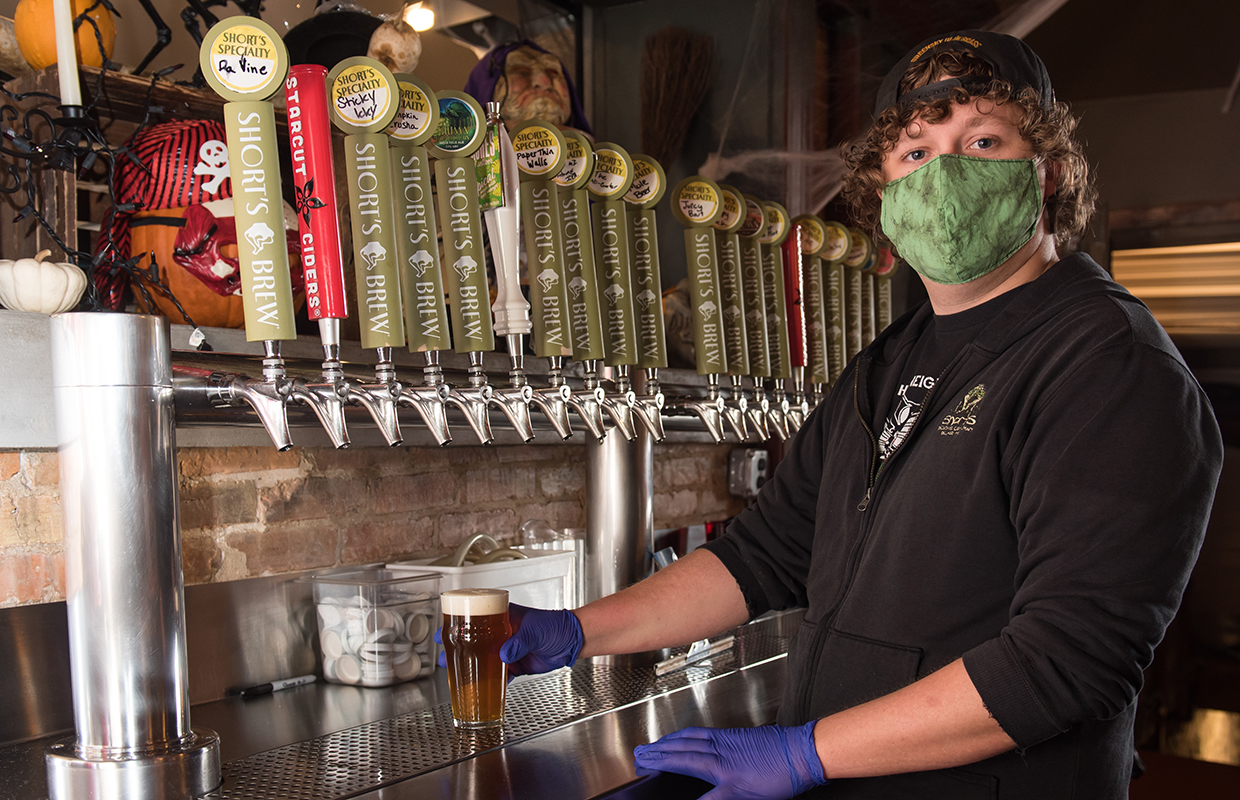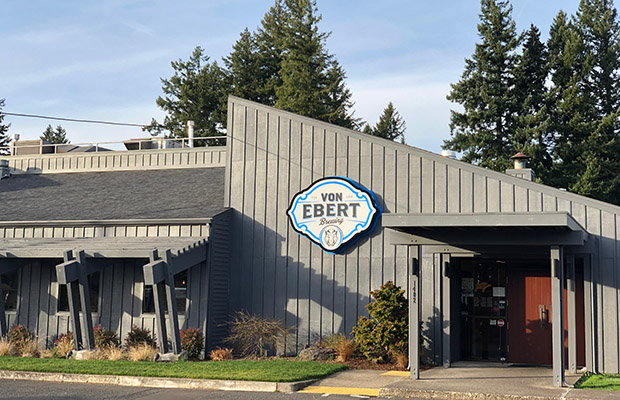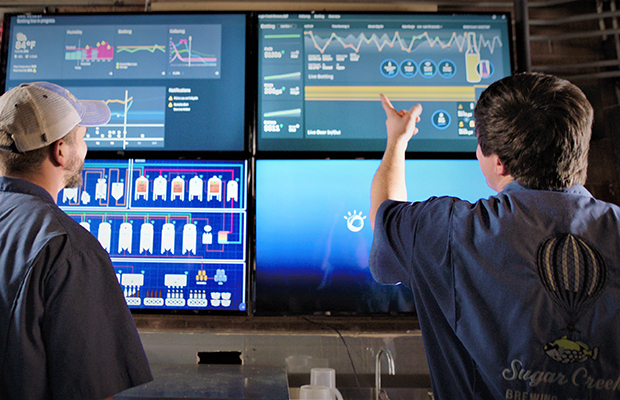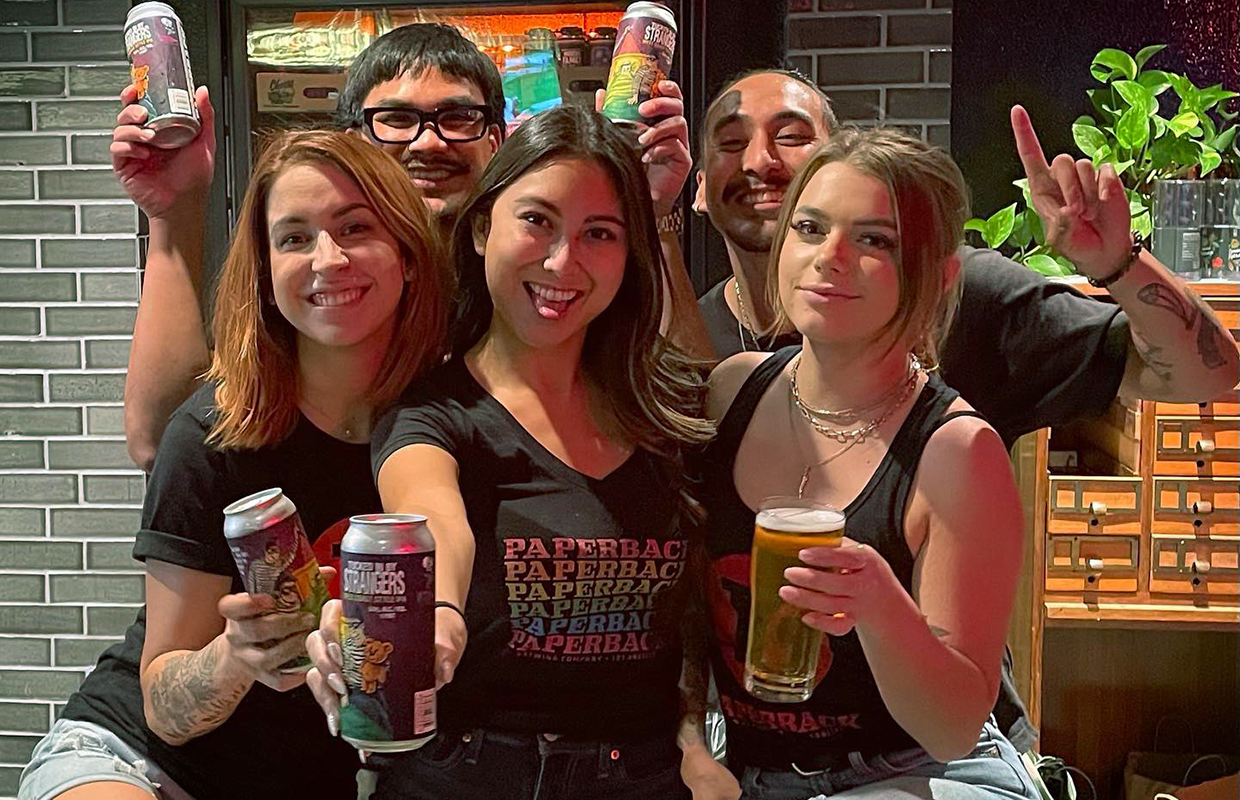
The taproom model for breweries has been devastated in 2020 due to the COVID pandemic. Ideas on how to sell beer out of a taproom have had to be drastically manipulated but the ingenuity of brewery owners has shined through as they and staff members have found ways to try to make it work.
Usually a celebration with multiple releases at its taproom, Braxton Brewing’s annual Dark Charge Day for its popular Stout was focused around one specialty release. Otherwise, explained CEO and co-founder Jake Rouse, Braxton has tried to operate the business as ordinarily as possible.
“Some of our customers did reach out about their disappointment in us having moved forward with the yearly celebration,” Rouse said. “However, we continue working to create events that will keep the excitement going, while at the same time really focusing on keeping everyone safe.“
Rouse said the core of the Covington, Kentucky brewery’s customers understand what is trying to be done.
“But we also have had to manage conversations with customers that don’t respect our need — or desire — to continue planning programming within the taproom,” Rouse said.
The Braxton taproom has vasscillated between needing to lay staff off and needing to increase staff to help manage the business. Recently the brewery made a big investment with rooftop igloos. Rouse said the success of the igloos has come from the brewery’s ability to capitalize on bookings and reservations. As it has been running at 80-90% booking capacity each weekend.
Santa Monica Brew Works Tasting Room Manager Jack E. Browning, III, said that thinking on the fly and complying with changing protocols has been key to the California brewery’s success.
“Our mission has always been to ensure our guests get the quality product they expect with the service they deserve,” he said. “We’ll continue to jump through whatever hoops are presented to us to ensure that happens moving forward.”
Mandatory outdoor restrictions forced Santa Monica to innovate.
“Luckily for us, we were able to take advantage of extra space normally zoned for parking,” Browning said. “This presented some hurdles including; securing the area both with perimeters, bollards, and security personnel as well as adapting tables and seating.”
Mandatory food service was another challenge as the brewery did not have a kitchen.
“We were fortunate to pair with local food trucks and coordinate service,” Browning said. “In doing so we were happy to partner with old friends and create new relationships as well.”
Santa Monica CEO Scott Francis said that a lot of new ideas that have sprung up this year will stay, including a new webstore, accepting cashless payments only, online fulfillment (pickup, delivery, and shipping), and the app-based reservation system. The brewery staff has also learned to set up and run its outdoor beer garden in a super-efficient and customer-friendly manner.
Heavy Seas made the decision to not reopen its taproom, said the brewery’s Director of Marketing & Hospitality, Sarah West.
“Our taproom is directly connected to our production facility and in order to keep our brewery crew as safe as possible, we need to limit allowing outside visitors from entering into the building,” she explained. The Baltimore-area brewery had to quickly redirect its efforts to curbside pickup by building a website and implementing a safety plan for its staff almost overnight.
“Our customers have been extremely supportive and understanding,” West said. “While we know they are eager to get back to the taproom they also understand that the decision we have made is for the safety of the staff that we love and it’s only temporary.“
There have been many instances of breweries having to deal with customers publicly, be it through viral videos or social media sites that have documented such cases. Short’s Brewing posted to social media a note in August that stated: ‘It’s time to STOP. Enough is enough already. To all of the customers who have swore at us, yelled, laughed in our faces, threatened negative reviews, name-called, belittled, and brought us to tears, we are done. We’re here to tell you that we stand with all of our staff and we will not tolerate this behavior at our pub. Our staff deserves better.’
CEO Scott Newman-Bale told Brewer that being in the hospitality industry with a brewpub in Bellaire, Michigan, for the most part, service has been with a smile on employees’ faces.
“That said, we don’t let anyone verbally abuse our staff, so we’ve had to stand up to a few bullies over the last few months,” Newman-Bale said. “We’re doing everything we can to keep our staff and our guests safe, and it’s unfortunate that some people don’t see it that way.”
Newman-Bale explained that Short’s shifted its service model completely, switching to reservations only while dialing up its takeout options in addition to reducing capacity.
“We erred on the side of caution in the beginning when we were allowed to reopen, so we haven’t had to make too many adjustments along the way,” he said. “Reservations are great, and our increased takeout business has really streamlined that part of our business.
“Clear communication — both before they arrive and as they check in — has been key so customers know what to expect.”
When you mix food into the equation — as many breweries do by running a brewpub model — making huge adjustments to production has become the norm.
Von Ebert’s product mix has gone from 25% cans/75% draft to a complete opposite, said Head Brewer Sam Pecoraro. Now the Portland, Oregon brewpub is canning up to 80-90% of its product.
“The other big change is really just adjusting the flow of the production schedule,” he said. “We get a few days notice when the brewpub has to shut down again and to be able to make adjustments on the fly and make sure that beers go where they need to.
“We’ve had to come up with the last-minute labels all of a sudden a few times this year. That’s definitely been the biggest challenge. Where we make most of our beer we’re usually running about five times a week and this week we’re not even brewing. That’s a drastic downshift.“
The brewpub’s front of house is down to just managers, he added.
“We’ve shifted to counter service only instead of table service, which I’ll be honest with you, we might never switch back,” Pecoraro said. “I think a lot of people are in that position now. A lot of people are moving to digital menus, I think [paper menus are] something that people will never go back to.”
Photo courtesy Short’s Brewing/Sara Cozolino Photography




Be the first to comment